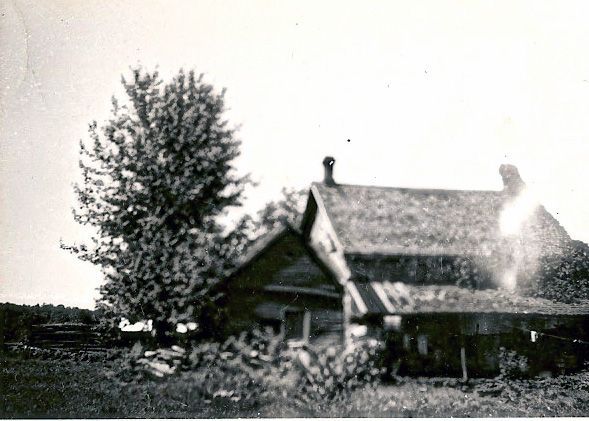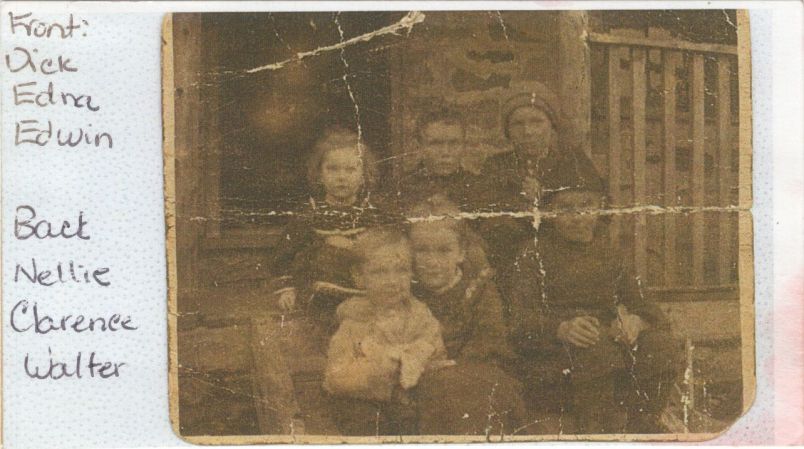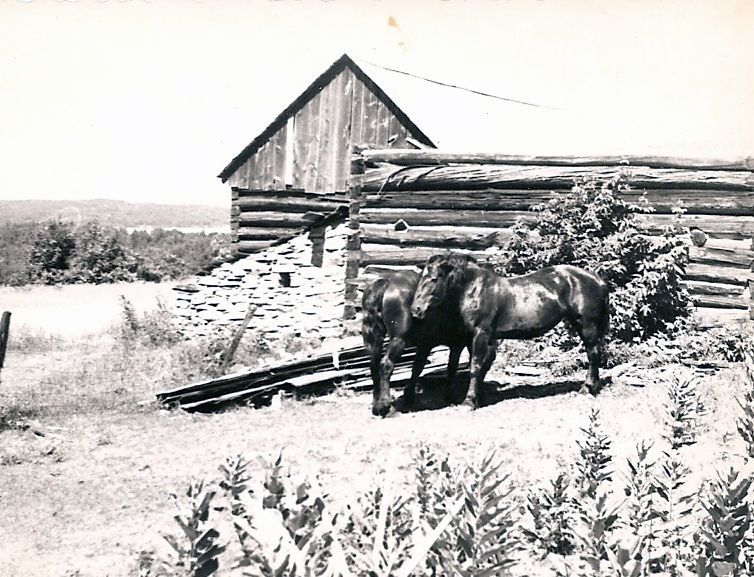John Thomas Hewitt / Clara Johnson
Settler of township lots: Lot 7, Conc. 7, Stanhope
Link to John Thomas Hewitt family on the Settlers of Algonquin Highlands family tree
Location: Map point is the approximate location within this 100 acre lot west of Halls Lake north of Buckslide Road.
Land acquisition:
- 1872 This 101 acre lot was registered as a Free Grant through the Free Grant and Homestead Act of 1868 under the locatee name William Welch. Note Lot 8, Conc. 7 was listed under Thomas J. Hewitt.
- 1872 Lands Liable to Taxation: Township of Stanhope Patent Register - 101 acres to Thomas John Hewitt.
- 1872 Patent from The Crown. Ontario Land Parcel Register Book - Stanhope Concession 7 (Image 26).
Other Land: Lot 6, Conc. 7, Stanhope - 1888 from William [Abigail] Welch. Ontario Land Parcel Register Book - Stanhope Concession 7 (Image 22)
Dates of residency:
- 1871 Census of Canada: Stanhope
- 1872 Obtained the patent for 101 acres of land at Con 7 Lot 7 Stanhope Township

- 1881 Census of Canada, Stanhope:John Hewitt, farmer, alone
- 1883 Stanhope Voters List: John Hewett, owner, Lot 7, Conc. 7
- 1890 Stanhope Voters List: John Hewitt, owner, Lots 7 & 6, Conc. 7
- 1893 Stanhope Directory: Boskung
- 1899 Stanhope Directory
- 1901 Census of Canada, Stanhope: John & Clara Hewitt with 3 children
- 1901 Stanhope Voters List
- 1903 Business Directory, Stanhope: John Hewitt, Boskung
- 1903 Stanhope Voters List: John Hewitt, farmer, Lots 7 & 6, Conc. 7
- 1911 Stanhope Voters List at this location and Lot 6, Conc. 7
- 1911 Census of Canada, Stanhope: John T & Sarah Hewitt at Lot 7, Conc. 7, Stanhope
- 1911 Stanhope Post Office List
- 1918 Stanhope Post Office List
- 1924 Death: at this lot
Interesting facts:
Source: James Hewitt Family History, 1967:
John built a new house out of stone, getting them from the land and burning his own lime. His lime became famous as he produced enough to offer it for sale. He had no difficulty in disposing of it the quality was good. Being a very strong man, and with a great eagerness to work, he continued to cut wood and quarry stone until up in the twenties. In order to get a good burn, stones had to be placed in the kiln so that the fire would be evenly distributed and the fire had to be kept burning briskly and continuously for a week. This, of course, consumed a large quantity of wood so there had to be a ready supply, while burning his kiln of stone he would split and shave cedar to make shingles. Cedar must have been good then, as there still are miles of cedar fences on these farms which were split and made in spare times. John also made ax handles of very fine quality which sold for .50¢, it would be strong.

John Hewitt House: built by William George and younger brother John Thomas Hewitt (not by Billing). Source: Peter Hewitt’s Photo Collection ‘John Hewitt house'.
John, being more of a family man, and not a politician, looked after his parents who spent their last years living with him. He later sold the old home farm to Archie Coulter.
John married Clara Johnson and they raised a large family. Later on diphtheria struck them and Clara with her infant baby died, leaving him with a large family to raise. This was indeed a hardship, but somehow they managed. The older children were girls and they were able to do most of the work in the house. John worked at the camps most winters, leaving Edwin to manage at home. Edwin still lives there and grows a good garden in the spot where his father did nearly a hundred years ago.
Thomas John Hewitt. Source: Ancestry. ca story by Donna Callow :
As well as farming John was engaged in producing lime (calcium oxide) which he sold.
Lime is produced by the thermal decomposition of limestone, a process known as lime burning. For lime burning only broken limestone and a source of fuel was required, but it was hard and sometimes dangerous work. He quarried the limestone on the farm and cut his own timber. He placed the stones in the kiln so that the fire would be evenly distributed and the fire had to be kept burning briskly and continuously for about a week. The limestone had to be heated to temperatures in excess of 1800 degrees F, in order to convert the stone to lime.
The lump lime or quicklime was then drawn from the kiln. Quicklime was a dangerous product. It could cause terrible burns and if it entered the eyes would often cause blindness. To produce a powder suitable for lime putty it had to be slaked. This is a chemical process whereby the quicklime is mixed with water, which produces an extreme reaction, creating calcium hydroxide and steam of around eighty five degrees Celcius. The hot wet chaulk is poured into large open containers and when cooled is ready for use in for example, building construction.
When the slaked lime was mixed with sand it formed mortar and plaster. Most of the traditional buildings in this area would have had lime used in their construction, a superior product to modern cements in that it allowed the building to breathe and was not stronger than the stone in the wall, thereby preventing spalling and flaking of the stone.
While his kiln was burning John would split and shave cedar shingles for sale. He also made fine quality axe handles, which he sold for 50 cents.
John and Clara were a family oriented couple. They raised a family of ten over a fifteen year span and they took care of his parents in their older years.
Unfortunately diphtheria struck them in 1912 and they lost their infant daughter Lucy, and Clara died the following winter. This was a hardship but somehow they managed, with the older children helping to raise the younger ones. At the age of 69 John passed away with Eddie age 22, Nellie age 14 and Dick age 12, still at home.
Proceeding landowner: The Crown
Succeeding landowner:
- 1954 John Edwin Hewitt (son)
- 1960 Duncan Prentice
- 1977 Michael Edwin Buss
- 1982 William E Piggott
- 1997 David Schwartz
- 2003 Danny Lee
- 2005 Helmut Otto Scharl
Photo 1: John Thomas Hewitt's 6 Youngest Children (of 9 children) ~ 1909. Source: Peter Hewitt’s Photo Collection
Photo 2: John Hewitt barns. 300 yards north of stone house. Source: Peter Hewitt’s Photo Collection
